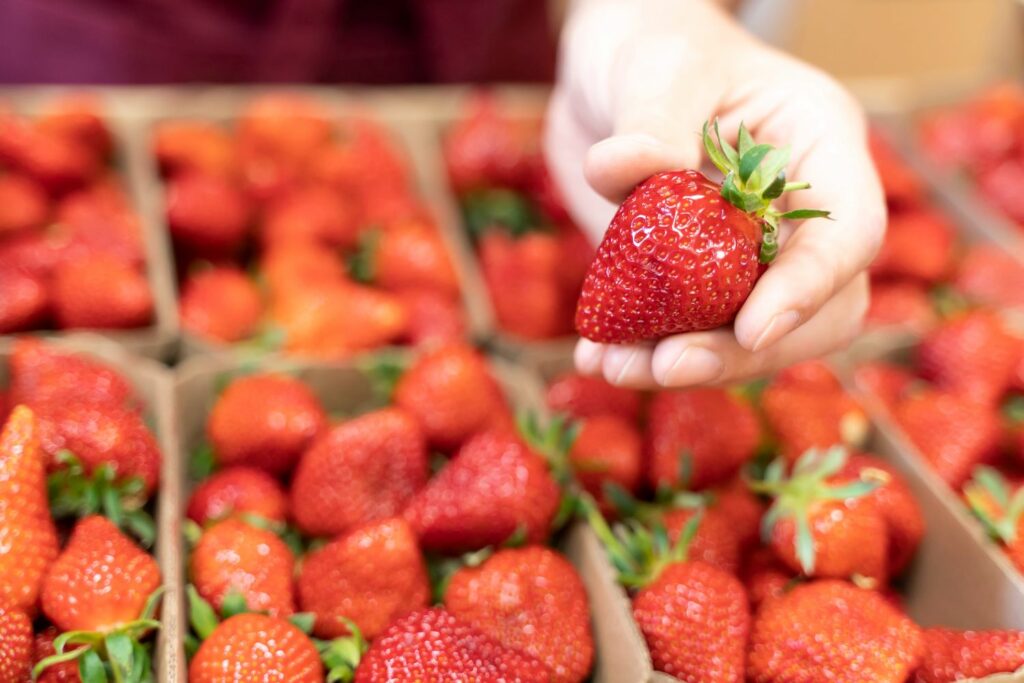Yield forecasting tool BerryPredictor to launch on market by 2024
2nd December 2022
A new science-based strawberry forecasting tool called BerryPredictor is in the last stages of development at NIAB’s WET Centre and is expected to launch on the market by 2024.

At the NIAB Soft Fruit Day technical webinar on 30th November, Dr Mark Else, head of crop science and production systems at East Malling, talked about the challenges of accurate yield prediction in strawberry crops and introduced a new tool that might help solve those.
BerryPredictor has been developed as part of a three-year Innovate UK project at NIAB’s Water Efficient Technologies (WET) Centre and is the result of collaboration between plant scientists, meteorologists, and AI experts.
The tool aims to improve harvesting forecasts, yield predictions and crop productivity by monitoring and optimising zonal phytoclimates in covered strawberry production.
Variables affecting fruit yield
Speaking to delegates, Dr Else outlined the various factors that impact on cropping potential in strawberries, which include:
- Air temperature
- Relative humidity
- Polytunnel design
- Coir water and nutrient availability
- Pollination
- Film properties and age
- Plant quality
- Truss kinking
- Pest and disease outbreaks
- Zonal phytoclimates in the polytunnel
To illustrate the effect light levels have on fruit production in different tunnels, Dr Else highlighted the yield anomalies observed in the WET Centre’s Commercial and Advanced areas. Data from previous years has shown that Class 1 yields have always been higher in the Commercial area for both June and everbearing varieties.
This disparity is down to the differences in light levels and available PAR at the canopy level between the two units, with PAR referring to the wavelengths of light that drive photosynthesis. According to Dr Else, class 1 yields were 5% higher in Commercial tunnels, which correlated with PAR values at canopy height which were also 5% higher.
Dr Else also pointed out the differences in fruit yield between eastern and western rows in polytunnels. Year after year, eastern rows have produced consistently more fruit than expected given the amount of PAR available, while class 1 yields in western rows have been lower.
Moreover, air temperature and therefore fresh fruit weight also varies between leg rows and centre rows, with leg rows being slightly cooler which increases fresh weight. As a result, basing yield forecasts on centre rows would lead to inaccuracies, Dr Else explained.
The above observations and the fact that class 1 yields can vary by up to 50% between different rows underline that the effects of zonal phytoclimate must be measured and accounted for in any forecasting tool.
Other factors that can have a significant impact on cropping potential include inter- and intra-seasonal weather variations, plant quality, and resilience to different yield-reducing events such as heatwaves or pest and disease outbreaks.
BerryPredictor: The science-based strawberry forecasting tool
When developing BerryPredictor, considerable work has gone into accounting for all the different variables that can influence strawberry yields in tunnel-based production systems. Introducing the tool, Dr Else gave an overview of what has been achieved so far as well as the steps yet to complete before the product can be made available to growers.
To create accurate yield forecasts, BerryPredictor models the effects of air temperature on the fruit development rate and fruit size of each variety. The models are informed by five-day forecasts of polytunnel air temperature and PAR based on weather data sourced from Weatherquest.
Predicted times to harvest have also been within one day for many varieties. In addition, estimations of fresh fruit weights at harvest have also been incorporated, and the user interface is developed and tested.
Meanwhile, work yet to be done include accounting for intra- and inter-annual climate variability, incorporating the effects of different zonal phytoclimates and events that reduce yields, as well as further testing at grower partner sites next year. It is Dr Else’s hope that growers will be able to enjoy the product by 2024.
